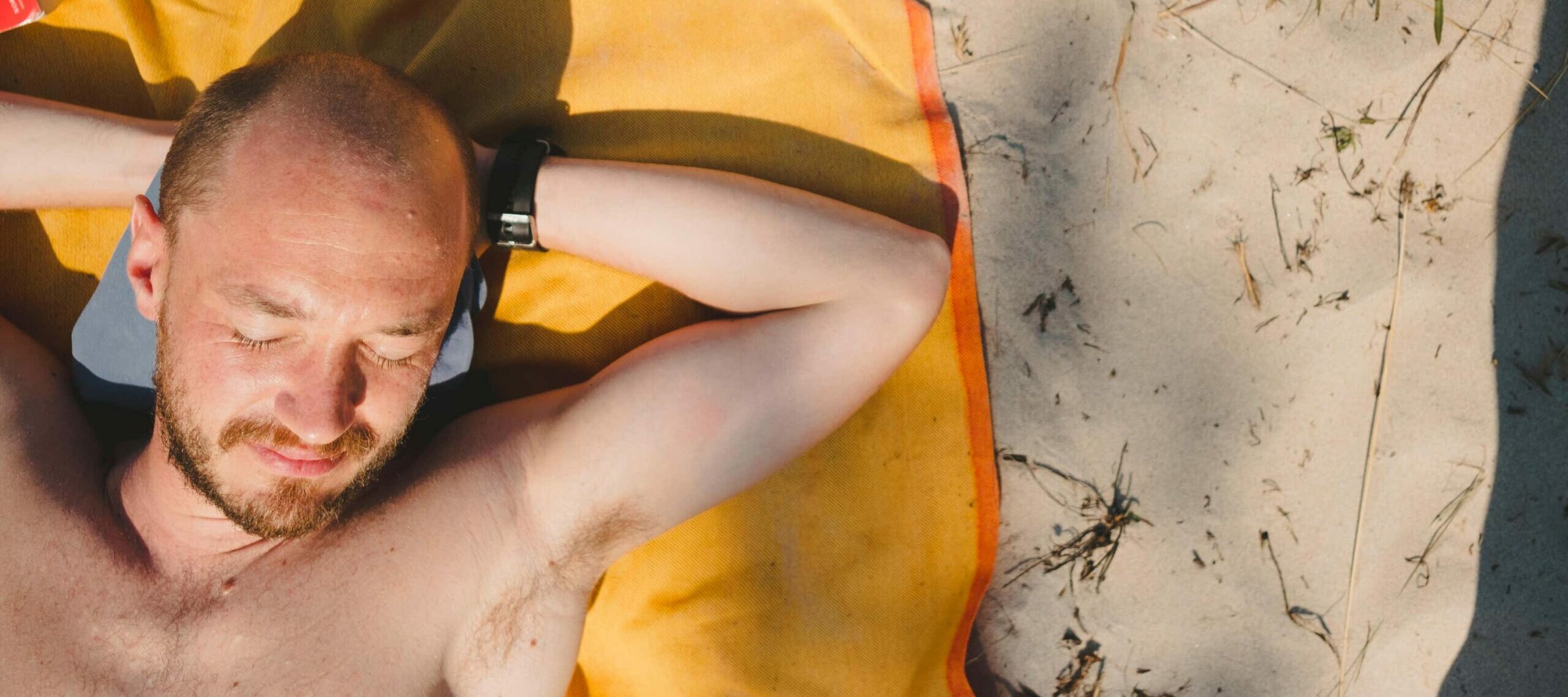Skin cancer affects significantly more men than women, according to NHS figures – and men are almost twice as likely to die from the disease.
Melanoma skin cancer kills more than 2,000 people every year in the UK, according to the charity Cancer Research UK – and since the Seventies, skin cancer mortality rates in men have tripled.
Rates of non-melanoma skin cancers (which are generally less serious than melanoma, but still need to be diagnosed and treated) are also higher in men – and experts have warned that these figures are set to keep rising.
While there’s not one single factor at play here, is it time for some more serious conversations about male sun care?
Even removing dangerous melanomas from the picture, when men use sun protection they are less likely to get a painful burn and develop signs of sun damage, like uneven skin tone or sunspots.
Is the gender skincare gap having an impact?
Alex Doyle, the founder of male skincare and cosmetics brand Altr, believes “gender norms are incredibly important in all of this.
Women are held to a completely different beauty standard than men are. Men haven’t faced as much pressure as women to look after their skin.
“Recent growth in use of Instagram, TikTok, and Zoom, however, means men are on display more than ever, which is making them more self-conscious about their skin.
[But] the concept of men’s skincare as a whole was laughed at 20 years ago or so, and even moisturising was seen as effeminate,” Doyle adds.
“This has now become accepted as a standard practice amongst most men under the age of 40, and the market is quickly developing to catch up with the female market.”
How can men protect their skin?
When it comes to protecting our skin from sun damage, the same rules apply for men as they do for women. But even women aren’t getting it spot on all the time – as experts advise we should think about protecting our skin all the time, not just when it’s very sunny outdoors, or when we’re on holiday in a hotter country.
“Everyday SPF protection is absolutely necessary, regardless of season or geography. It’s something all dermatologists universally agree on,” says Diane Cannon from Melanoma UK, who are working with LifeJacket Skin, an SPF brand specifically for men. “Many women get this protection in the form of make-up, foundation and SPF moisturisers.”
The good news is, a new world of skincare options is opening up for gents who are looking to keep their skin healthy and in tip-top shape, as well as make-up products so they too can express themselves, or cover up insecurities.
What should men absolutely be doing then, if they know they are probably not doing enough to protect their skin from harmful rays right now?
“To keep things simple, guys should find an SPF moisturiser they like and which they apply every morning before heading outside.
Ideally, it would be SPF 30 minimum with a good UVA rating. When outside for longer periods of time, sunscreen is necessary on all exposed skin,” says Cannon.
It’s important to maintain sunscreen application throughout the day, and don’t be afraid to ask someone to help you reach somewhere you can’t.
According to the Mayo Clinic, skin cancer is most likely to affect skin that the sun can reach – like the scalp, face, ears, neck, chest, arms and hands.
Legs can be another common culprit, and don’t forget things like protecting your lips from sunburn. And if you’re bald or have very short hair, you better get some SPF on your head too.
When is it time to see a doctor about skin concerns?
This isn’t just a conversation about protecting your skin with suitable sunscreens and products. It’s about making sure any possible warning signs of skin cancer are checked out early, too.
And remember – whatever your skin tone or ethnicity, all of this advice applies. It’s important for everybody to protect their skin from damage. Plus, although it can be harder to spot changes to darker skin tones, they may still be there.
“Every two to three months, you should check your skin for moles or marks that are changing. Look for growing size, changing shape, new colours, bleeding, pain, crusting, red around the edges, or itching. It’s far better to have things checked early and quickly, rather than let skin problems linger,” says Cannon.
You might be thinking it’s nothing to worry about, so why waste a doctor’s time – but we all need to be aware of our skin health.
And if it is cancer – or a specialist thinks there’s a chance it could develop into cancer in the future – getting things sorted early really does make a massive difference.
As Cannon emphasises: “Don’t be afraid about wasting a doctor’s time – they would prefer you spoke to them.”
